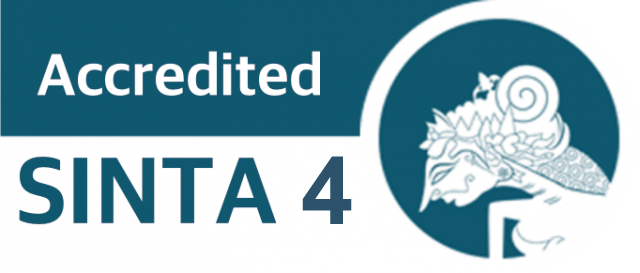Development of Biology Teaching Materials Based on Biopreneurship for High School Students
DOI:
10.29303/jpm.v20i6.10028Published:
2025-10-04Issue:
Vol. 20 No. 6 (2025)Keywords:
Biology Teaching Materials; Biopreneurship; High School; ValidityArticles
Downloads
How to Cite
Downloads
Metrics
Abstract
Biology learning in high school often faces challenges due to students’ reliance on teacher explanations and conventional textbooks, which tend to be less engaging and limit the development of critical and entrepreneurial skills. To address this issue, innovative teaching materials are needed that not only improve students’ understanding of biological concepts but also foster creativity and independence through entrepreneurship-based approaches. This study aims to develop and test the validity of biopreneurship-based biology teaching materials for high school students. The research employed a 4D development model (Define, Design, Develop, and Disseminate) with a focus on the first three stages. Validation of the teaching materials was conducted by three expert validators using questionnaires, and the results were analyzed with the Aiken index. The construct validity assessment produced values ranging from 0.58 to 0.94, while content validity ranged from 0.63 to 0.75, both categorized as valid. Additionally, the readability test using the Flesch-Kincaid Grade Level showed that most of the text fell within the easy-to-moderate range, making it suitable for high school students. These findings indicate that the developed materials meet the scientific and pedagogical standards required for classroom use. Furthermore, the integration of biopreneurship elements into the biology content provides an innovative approach that not only enhances students’ conceptual understanding but also motivates them to develop an entrepreneurial spirit, particularly in managing biological resources. Overall, this study concludes that the developed teaching materials are valid, relevant, and beneficial for high school biology learning, making biology both meaningful and applicable to students’ real-life contexts.
References
ulastri, A., Hidayat, H., , G., Islami, S., & Edya, “Developing an Entrepreneurship Module by Using Product-Based Learning Approach in Vocational Education,” International journal of environmental and science education, vol. 12, no. 5, pp. 1097–1109, 2017.
M. Mispandi and Muh. Fahrurrozi, “Development of Economics Teaching Materials Based on Entrepreneurial Values as A Learning Media,” Economic Education Analysis Journal, vol. 12, no. 1, pp. 1–9, Mar. 2023, doi: 10.15294/eeaj.v12i1.66513.
H. Syarifah, Harwanto, and R. D. Rusmawati, “Development of Teaching Materials Using LEAD Series (Listen, Explore, Analyze, and Do) Craft and Entrepreneurship Subjects Based on Local Potentials Bawean Island, Gresik Regency Assisted by Google Classroom.,” Jurnal Penelitian Pendidikan IPA, vol. 9, no. 7, pp. 5406–5411, Jul. 2023, doi: 10.29303/jppipa.v9i7.4097.
B. Badawi, A. Prihatmojo, E. Elizar, and D. S. Kuning, “Need Assessment of Islamic Teaching Materials Character-Based Entrepreneurship in University,” Al-Hayat: Journal of Islamic Education, vol. 7, no. 1, p. 75, Apr. 2023, doi: 10.35723/ajie.v7i1.330.
K. Ellborg, “In the Eye of the Beholder: Visualising Students’ Implicit Entrepreneurship Theories,” Entrepreneurship Education and Pedagogy, vol. 6, no. 3, pp. 458–480, Jul. 2023, doi: 10.1177/25151274221130005.
F. S. F. Shiyamsyah, Y. Yuliani, and Y. S. Rahayu, “Validity and practicality of project-based learning teaching modules to train life skills Era Society 5.0 (bioentrepreneurship),” JPBI (Jurnal Pendidikan Biologi Indonesia), vol. 10, no. 1, pp. 96–106, Mar. 2024, doi: 10.22219/jpbi.v10i1.30141.
N. Agustin, M. Ibrahim, and W. Widodo, “Pengembangan Bahan Pembelajaran IPA Berbasis Biotechnopreneurship untuk Melatih Life Skills Siswa SMP,” 2016. [Online]. Available: http://ojs.ikipmataram.ac.id/index.php/prismasains/
Ş. Gül and P. D. Kargin, “Text Readability Level Investigation about Biology Subjects-related Units in ‘Science 7 Textbook,’” Journal of Science Learning, vol. 4, no. 4, pp. 347–356, Aug. 2021, doi: 10.17509/jsl.v4i4.33252.
C. D. Gould, “The readability of school biology textbooks,” J Biol Educ, vol. 11, no. 4, pp. 248–252, Dec. 1977, doi: 10.1080/00219266.1977.9654155.
Ş. Gül, “Determination of the Readability Levels of the Texts Related to Biology Topics in the Science Textbook-6,” Open Journal for Educational Research, vol. 5, no. 1, pp. 77–90, Jun. 2021, doi: 10.32591/coas.ojer.0501.07077g.
U. Mursyadah, “Tingkat Keterbacaan Buku Sekolah Elektronik (BSE) Pelajaran Biologi Kelas X SMA/MA,” vol. 1, no. 4, 2021, [Online]. Available: http://www.bse.depdiknas.go.id.
Y. Ivaningtias, S. Indana, and N. K. Indah, “Validity of problem-based learning biodiversity e-book integrating Ruwat Petirtaan Jolotundo’s local wisdom for science literacy,” JPBI (Jurnal Pendidikan Biologi Indonesia), vol. 10, no. 3, pp. 874–886, Nov. 2024, doi: 10.22219/jpbi.v10i3.36690.
K. Zhadan, Y. Romanenko, V. Panchenko, G. Mukhamedzhanova, V. Dundukov, and D. Shaikina, “Teaching biology in senior grades of secondary school: testing an electronic textbook,” Journal of Educational Sciences, vol. 80, no. 3, pp. 163–174, 2024, doi: 10.26577/JES2024v80.i3.013.
Arica Pavitasari, Dian Puspita, and Mar’atus Sholihah, “Pengembangan Virtual Laboratory pada Materi Inovasi Teknologi Biologi untuk Meningkatkan Pemahaman Konsep Siswa Kelas X SMA,” Jurnal Cakrawala Pendidikan dan Biologi, vol. 2, no. 1, pp. 151–163, Mar. 2025, doi: 10.61132/jucapenbi.v2i1.255.
Author Biographies
Nur Hasanah, Biology Education Study Program, University of Mataram
A. Wahab Jufri, Biology Education Study Program, University of Mataram
Lalu Japa, Biology Education Study Program, University of Mataram
License
Copyright (c) 2025 Nur Hasanah, A. Wahab Jufri, Lalu Japa

This work is licensed under a Creative Commons Attribution 4.0 International License.
The following terms apply to authors who publish in this journal:
1. Authors retain copyright and grant the journal first publication rights, with the work simultaneously licensed under a Creative Commons Attribution License 4.0 International License (CC-BY License) that allows others to share the work with an acknowledgment of the work's authorship and first publication in this journal.
2. Authors may enter into separate, additional contractual arrangements for the non-exclusive distribution of the journal's published version of the work (e.g., posting it to an institutional repository or publishing it in a book), acknowledging its initial publication in this journal.
3. Before and during the submission process, authors are permitted and encouraged to post their work online (e.g., in institutional repositories or on their website), as this can lead to productive exchanges as well as earlier and greater citation of published work (See The Effect of Open Access).











